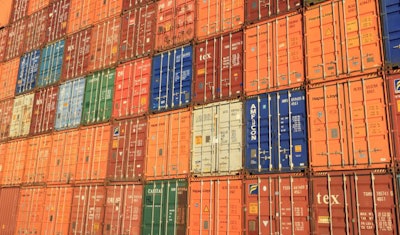
In late March 2021, Steve King, president and CEO of the American Pet Products Association (APPA), predicted that supply chain disruptions and delays in the pet industry—including of raw materials like some pet food ingredients and aluminum for cans—along with accompanying rising costs, would continue throughout 2021 and into the first quarter of 2022.
Let’s hope that projection wasn’t overly optimistic.
On August 30, 2021, a record number of container ships—44—were awaiting entry into two of California’s largest ports, breaking the previous pandemic-caused record of 40 ships, set in February 2021. In other words, the situation is getting worse. While the pet food industry has seemed to adapt well to date to the ongoing disruptions and shortages, what are the short- and long-term outlooks that brands, producers and suppliers need to plan for?
COVID-19, labor shortages, holiday buying making things worse
While surging consumer demand for all types of goods, including pet food, drove initial delays and scarcities in the early days of pandemic, now labor shortages, other COVID-19-related disruptions and holiday-buying surges are the main culprits behind the backup, according to the Marine Exchange of Southern California, cited in an article on Business Insider by Hannah Towey, Grace Kay and Áine Cain.
The two California ports, in Los Angeles and Long Beach, account for about one-third of all U.S. imports, so when so many ships have to wait an average of 7.6 days to enter a port and be unloaded, it exacerbates the problems that have been roiling the global economy, and most industries, since the start of the pandemic. “The normal number of container ships at anchor is between zero and one,” said Kip Louttit, executive director of the Marine Exchange of Southern California, in a July article also on Business Insider.
Global situation: ‘Great Supply Chain Disruption’
The headline of the July Insider article began, “The US shipping crisis is not going away … .” Indeed, and it’s definitely not confined to just the U.S. New outbreaks of COVID-19 in China earlier this year temporarily closed ports there that account for a large portion of the global shipping capacity; one, in Ningbo, is the third-largest container port in the world, according to Peter S. Goodman and Keith Bradsher in a New York Times article. The giant cargo ship becoming lodged in the Suez Canal in March 2021 certainly didn’t help.
“The world has gained a painful lesson in how interconnected economies are across vast distances, with delay and shortages in any one place rippling out nearly everywhere,” wrote Goodman and Bradsher, who referred to the situation as the Great Supply Chain Disruption.
Another exacerbation: the fact that, prior to the pandemic, many companies had embraced lean production principles to cut costs and raise profits, resulting in lean inventories that couldn’t provide any sort of cushion for the confluence of factors driven by the COVID-19 crisis, including rising consumer demand, labor shortages and shipping problems.
Thus, “normalcy might be ‘another year or two’ away,” as Goodman and Bradsher quoted Adam S. Posen, a former member of the Bank of England’s monetary policy committee and now the president of the Peterson Institute for International Economics in Washington.
Pet food, pet owners are resilient
“Just as the health crisis has proved stubborn and unpredictable, the turmoil in international commerce has gone on longer than many expected because shortages and delays in some products have made it impossible to make others,” wrote Goodman and Bradsher.
Fortunately, pet food is not as dependent on other products, though it does often compete with the human food supply chain for some of the same ingredients and materials. Even with ingredients used mainly or only in pet food, like some meat or poultry meals, many companies have been able to find replacements to plug shortages—notwithstanding the mad scramble that can spur in terms of reformulating products and relabeling packages. And while producers’ and suppliers’ costs are definitely higher than pre-pandemic, most pet-owning consumers seem willing and able, so far, to absorb higher prices, judging by continuing pet food sales growth.
Bottom line: The waters ahead for pet food certainly don’t offer smooth sailing, perhaps not for another year or so. But, like the consumers who continue to buy more of its offerings, the industry remains remarkably resilient.


















